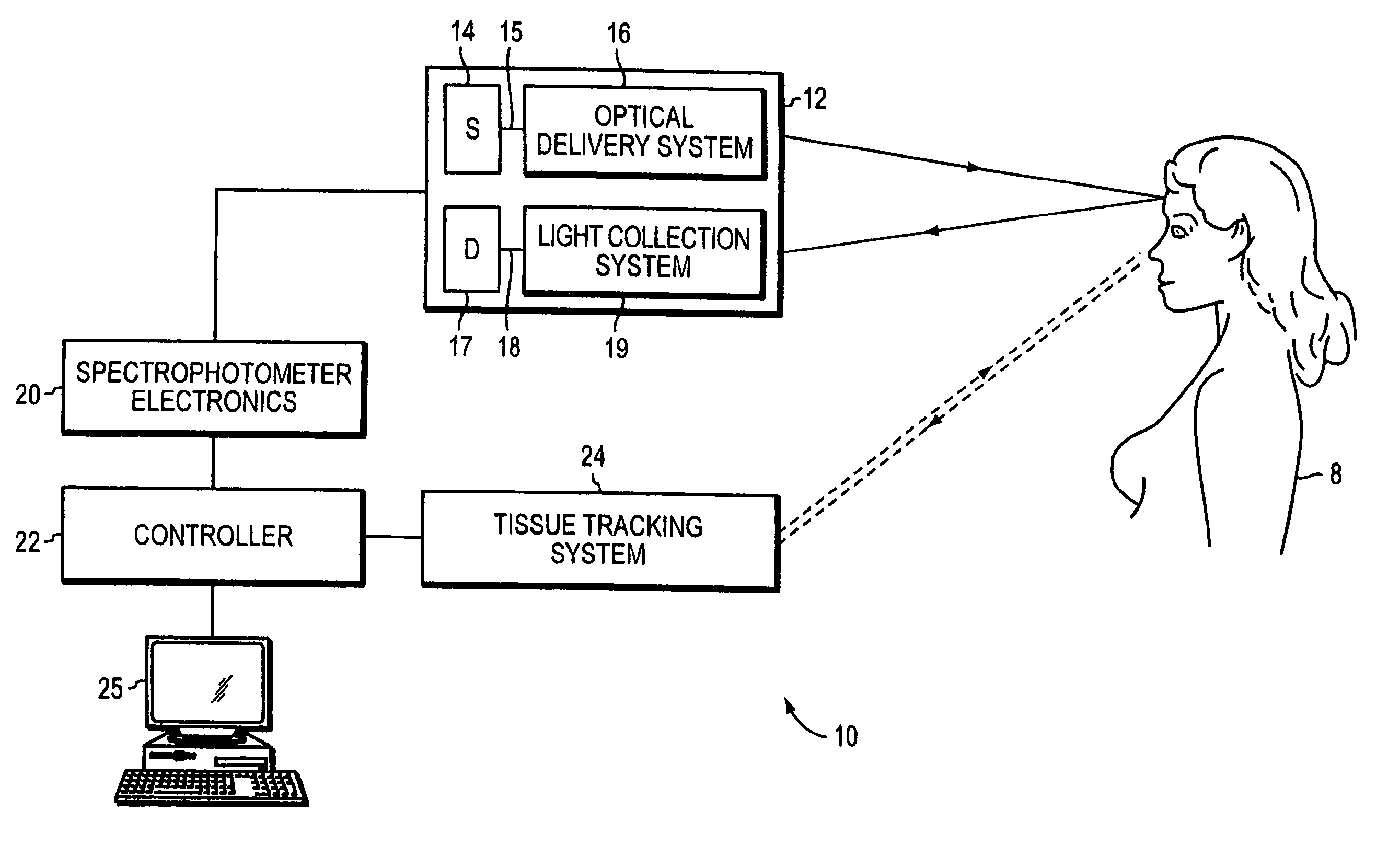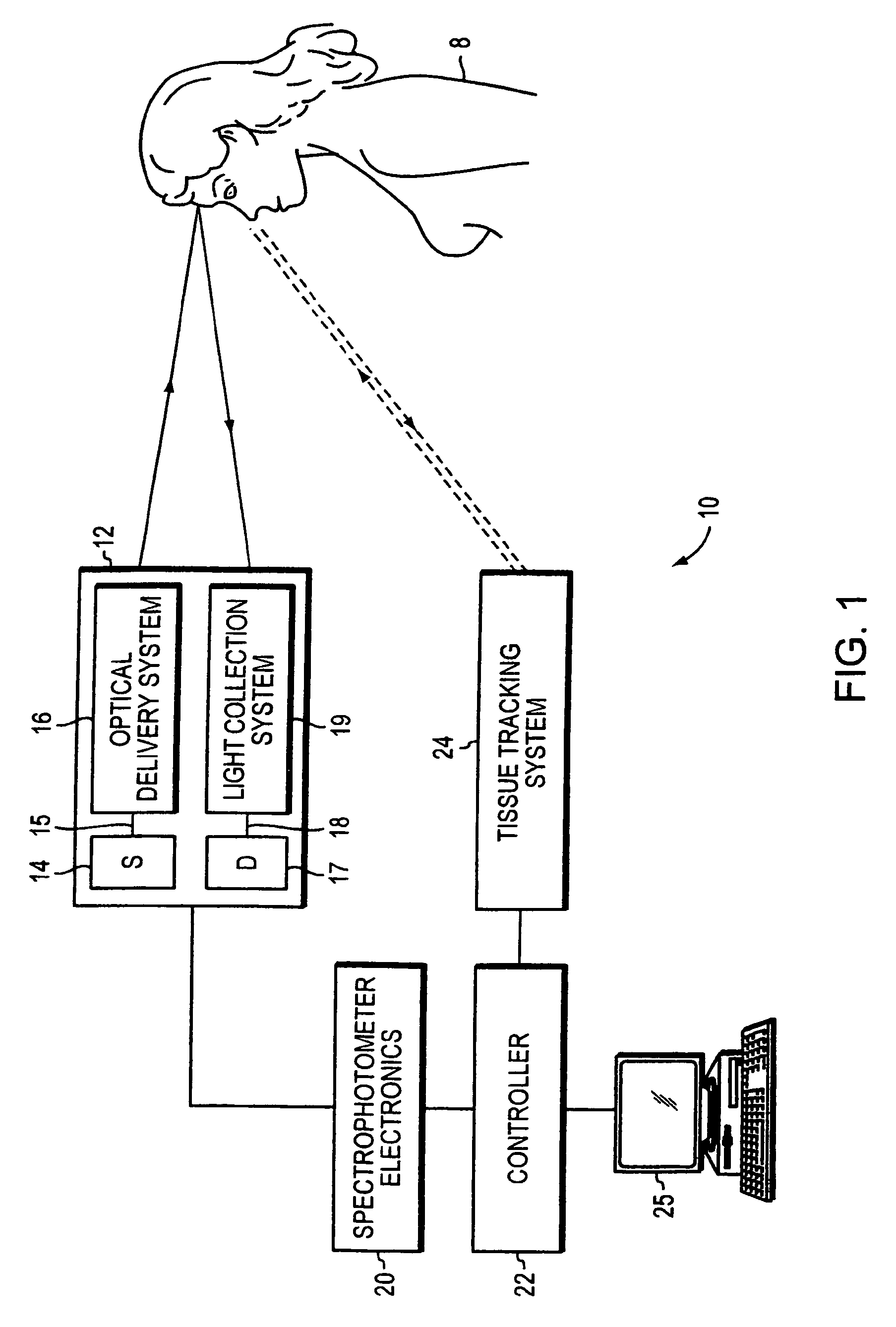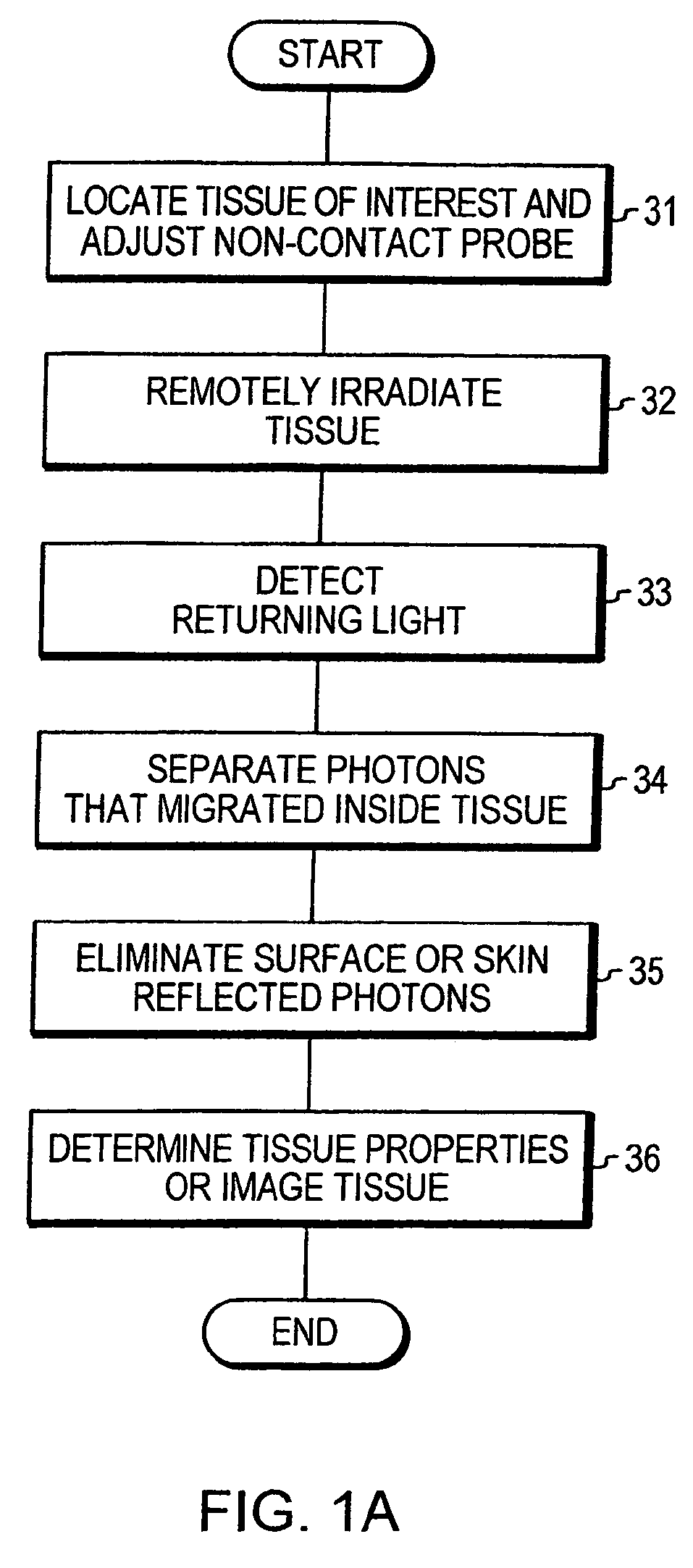Optical examination of biological tissue using non-contact irradiation and detection
a biological tissue and non-contact technology, applied in the field of optical examination of biological tissue using non-contact irradiation and detection, can solve the problems of subject's head, breast or limb, reaches the limit of convenience and accessibility, and the path cannot be approximated by a straight line, so as to reduce the effective numerical aperture and reduce the light collection efficiency
- Summary
- Abstract
- Description
- Claims
- Application Information
AI Technical Summary
Benefits of technology
Problems solved by technology
Method used
Image
Examples
Embodiment Construction
[0063] The described systems and methods use non-contact (i.e., remote) or contact light coupling in four different embodiments. The first embodiment is a spectroscopic system providing contactless (i.e., non-contact) light irradiation and light detection of photons emanating from the tissue surface. This specification primarily describes this type of optical coupling for tissue examination and imaging. In another embodiment, the optical system utilizes remote irradiation and a contact light collection system touching the tissue surface. In the third embodiment, the optical system uses a contact delivery system (being in contact with the tissue surface) and a remote light collection system. The last embodiment is an optical system utilizing contact irradiation and contact light collection.
[0064]FIG. 1 shows schematically a non-contact optical system 10 including a non-contact optical probe 12, spectrophotometer electronics 20, a system controller 22, a tissue tracking system 24 and...
PUM
 Login to View More
Login to View More Abstract
Description
Claims
Application Information
 Login to View More
Login to View More - R&D
- Intellectual Property
- Life Sciences
- Materials
- Tech Scout
- Unparalleled Data Quality
- Higher Quality Content
- 60% Fewer Hallucinations
Browse by: Latest US Patents, China's latest patents, Technical Efficacy Thesaurus, Application Domain, Technology Topic, Popular Technical Reports.
© 2025 PatSnap. All rights reserved.Legal|Privacy policy|Modern Slavery Act Transparency Statement|Sitemap|About US| Contact US: help@patsnap.com



